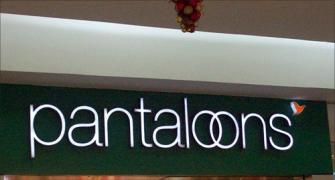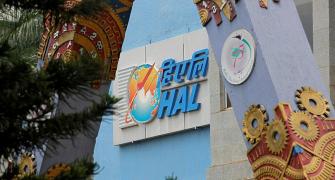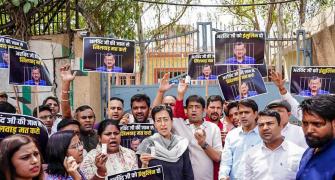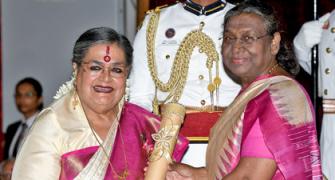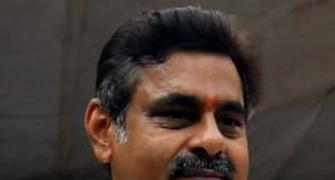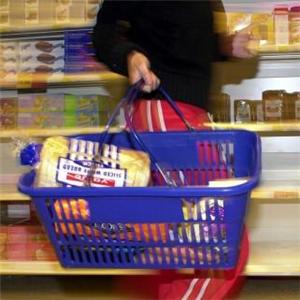 What's the easiest way to ensure your best customers come back to you over and over again?
What's the easiest way to ensure your best customers come back to you over and over again?
Make them part of a loyalty programme.
The concept is simple really: being a member earns them loyalty points and the more loyalty points they earn, the more rewards they unlock.
The rewards could be in the form of giving them special benefits (no-queue payment/priority delivery, free parking), giving them first dibs, and most exciting of all, offering a range of freebies and special discounts.
So, why is it that only 25-30 per cent of shoppers in India actually opt for a loyalty programme and even among those that do only about 15 per cent actively use them (source: industry estimates)?
"The whole process is complicated -- right from filling up the forms to redeeming your points against rewards," says a retail consultant based in Delhi.
"Above all, as a shopper, do you really want to carry 12 separate cards every time you go shopping?
"We are also using primitive technology to collate data and not really looking at consumer convenience as a priority area," adds the consultant.
This is not to say that loyalty programmes are unadvisable or useless.
Not at all, as many of the experts that The Strategist spoke to said.
Those in the business will tell you that a right kind of loyalty programme can help on several fronts -- in building customer loyalty, increasing brand value, allowing companies to understand the purchasing behaviour of consumers and thereby contributing to the financial health of the brand in a significant manner.
Caroline Papadatos, senior vice-president, LoyaltyOne, says, "Loyalty programmes are an effective device for identifying the best customers and moving them through the stages of customer engagement by giving them rewards, recognition and relevant communications."
That's the crux really -- relevance.
If the idea behind a loyalty programme is to encourage the continued patronage of customers, it has to be designed with the consumer at the centre.
So, the starting point has to be simplicity and transparency.
The first task of the brand is to set down the rewards and the way to earn them clearly, no strings attached, and the next step is to make the process of getting those rewards easy.
Just think of the way your local sabjiwala operates -- how he throws in some free dhania/mirchi or an extra nimbu for his best customers.
Not everyone thinks loyalty programmes work though.
Take Walmart, for instance, which is all set to open retail outlets in India over the next year-and-a-half.
Unlike other US supermarket chains like Kroger, Safeway, and SuperVal, Walmart does not run any loyalty programmes for its consumers.
According to a senior employee who did not want to be identified, Walmart believes "real loyalty lies in the offerings of low prices".
According to this employee, "It's going to be a similar route in India. We won't look at loyalty programme just yet for the Indian market. Instead, we will look at offering products at a competitive price."
Who's got it right
The modern-day loyalty programme takes off from the frequent-flier mile programme introduced by American Airlines in 1981 to reward repeat customers and build brand loyalty.
Since then sectors that have used customer loyalty programmes to their advantage have been hospitality, credit cards, airline and retail, according to Siddharth S Singh, director, fellow programme in management and associate professor of marketing, Indian School of Business (ISB), Hyderabad, who has also published a detailed research note, Customer Loyalty Programmes: Are They Profitable? (Management Science, Volume 54, No 6).
Sinha sees a great opportunity for loyalty programmes in the retail sector in India as more and more international players enter the market.
Ashok MS, chief operating officer, Accentiv, India, a leading operator in providing rewards and loyalty solutions (it has clients like Van Heusen, Louis Philippe, Tommy Hilfiger, Indian Oil, to name some), says that loyalty programmes do well in sectors that by their very nature record high transactions.
So, he adds, hospitality, credit cards, retail and airlines are potential sectors where such programmes do well. "In India, even the petroleum sector has tremendous potential in devising attractive loyalty programmes," says Ashok.
ISB's Singh says, "Eventually, I see loyalty programmes providing a complete view of a customer.
"This includes their interaction with the company and other behaviour such as on the social media. New metrics will come up that allow a firm to evaluate a customer better.
"The concept of customer value itself would become multidimensional and companies would learn to identify and exploit their relationship with customers along these different dimensions for various benefits." (Read interview with Siddharth S Singh, director, fellow programme in management and associate professor of marketing, ISB, on page 4)
So, what is the recipe for a good loyalty programme?
How does it evolve?
We will use three example -- two of India's biggest retailers and a private airline -- to demonstrate how it can be put to work effectively.
Take Future Group, for instance, which has a host of brands under its umbrella, including Pantaloons, Big Bazaar, Food Bazaar, Central, HomeTown, eZone, Brand Factory and Future Bazaar. Pawan Sarda, chief marketing officer, Future Group, says India has always had the tradition of 'loyalty programmes' especially when traditional family jewellers and neighbourhood 'dukaandaars' (shop owners), so to speak, created a loyal base of generations of customers.
So, in his view, effective loyalty programmes should come naturally to us.
In Sarda's view, successful loyalty programmes are those that constantly evolve based on needs of the customer and the responses of the competition; there's no room for complacency given that it's a tool that effectively decodes customer purchasing behaviour.
Future Group has taken great pains to devise a consumer friendly programme when it found that while consumers knew its different brands they did not know all these belonged to the same group.
Last year, Future Group and Payback, one of India's largest and Europe's most successful multi-partner loyalty programmes, entered a strategic tie-up to bring out a dedicated, single, loyalty card, that could be used for the company's various brands.
The 'one-card-several-benefits' concept now allowed the company to have 'crisper' consumer insight and a better personality engagement.
In just 10 months since the PayBack programme began, the company has got 8 million customers.
Every week since then, the group has added more than a lakh consumers to its loyalty programmes.
According to September 2012 data of the company, almost 45 per cent of the group level billing has come through customers engaged in the loyalty programme.
For Pantaloons, specifically, 70 per cent of the billing comes from loyalty programme customers.
How does Pantaloons
For the first three months after a customer picks up the card, the company communicates to her just how the system works, how it can benefit her.
There are offers to woo the customer to actually come to the store and experience the ease of use.
Once the concept sticks with her and she understands the 'value' of the loyalty card, the retailer starts tracking her shopping behaviour -- what are the common items on her purchase list, does she come midweek from office or on weekends to shop and so on.
Future Group offers a mix of rewards to its loyalty programme customers that include free parking, a separate cash counter, free home delivery, no fee on exchange offers, premiere passes for films, to name a few.
The data collected from loyalty card use has helped the retailer to categorise customers based on usage and purchase patterns, which in turn has helped it rationalise a host of things -- from stocking to store layout.
Brand-based data can also be used as a leverage in retailer-manufacturer relationships.
"If customers don't have brand loyalty, you can push back against manufacturers and tell them you won't carry their products anymore if they raise prices," says a leading retailer.
One such learning was that discount schemes don't always work.
"Discounts on private labels was not sustainable because every other brand duplicate the move.
"So, over a period of time we moved to a point-based system, wherein card holders can accumulate points and redeem them at any of the group stores," says Sarda.
How the group has ensured the plan works by "revisiting it and studying it every month".
"We are tracking the feedback continuously to make the programme more customer-friendly," says Sarda.
On its part, Shoppers Stop, one of the oldest retail brands in India, which began offering its popular First Citizen Loyalty Programme card to customers 18 years ago, has a total of 2.6 million members to vouch for its success.
Its loyalty programme continues to add "layers" to keep up with the changing times, according to Vinay Bhatia, customer care associate and senior vice-president, marketing & loyalty, Shoppers Stop Ltd.
He says that there's one fundamental principle that the company has been following from day one; charging a marginal fee to the customer to own a loyalty card.
While this automatically gives the customer a choice (to own or not to own a card), it also ensures customers use it to get the best return on their initial investment.
The rewards are similar -- free parking, communication on new products and special discounts; what the company gets out of it is consumer data.
"Our programme has allowed us to target customers better," says Bhatia.
He explains how two years ago, in an experiment done at the store's outlet in Malad, Mumbai, the company realised that men -- who are known to dislike shopping but who visited Shoppers Stop outlets with their family -- were buying only a handful of things from it.
The store concluded that may be they were not aware that Shoppers Stop also had an elaborate stock of menswear.
So it started communicating to this set of consumers ("not overdose but simply informing them and announcing bulk deals in the category, which wasn't the case before") and within four weeks, Shoppers Stop noted a Rs 2 crore increase in sales from that one store, from that one category alone.
Last year, about 72 per cent of the total sales at Shoppers Stop came from loyalty programme customers.
Three years ago the company felt it needed a separate team to not just handle the loyalty programme but to also study and analyse the data thrown up by it.
"Remember, the customer is not always structured in her thoughts as the retailer.
"Brand loyalty offerings can influence her decision and make it more manageable," says Bhatia.
Shoppers Stop goes as far as categorising its customers into two groups -- those who own loyalty cards, and with whom the company communicates, and those who don't.
"It helps to show just how critical is communication and how it can be tweaked to keep up with the changing demands of consumers," says Bhatia.
Shoppers Stop has a special app for smartphone users to help track "personality types" of its customers to integrate it with the loyalty programme.
Among others Jet Airways, feel experts, has done a great job with JetPrivilege, India's largest frequent flier programme. Way back in 1993, the airlines understood the need to have "repeat business" and in the next one year, it announced its JetPrivilege programme.
Though the initial benefits revolved around tele-check in and accumulated "burn and earn" miles, gradually it expanded, through customer feedback, to other offerings.
It started the tier system for different categories of members, thus allowing the airline to segment data collected on the basis of regularity and volume of travel.
The programme allowed for a unique 'Dynamic Tier Review System', which allowed customers to get benefits according to travel plans.
The programme has added an easy online system (to earn miles even after the air travel was completed), several partnerships with banks, hotels, credit card companies, restaurants, retail outlets and publishing houses to make it appealing to the flier.
Two months ago, according to a company report, Jet decided to spin off the programme into a whole new subsidiary to help it get a larger retail-based coalition loyalty structure to get better value on its investments.
Who's failing
If the benefits are so obvious why are some sectors slow to adopt loyalty plans and leverage its benefits?
"Most sectors make mistakes because they don't offer strong "value proposition" on loyalty programmes," says Ashok of Accentiv.
"Second, brands fail to offer 'relevant' communication (it's either too much or too little).
"Third, many companies (manufacturing, for instance) forget that just doing 'customer' loyalty is not enough.
What manufacturing sector needs is channel partner programming where dealers and other retail point people need to be targeted to help understand customer, even if indirectly," says Ashok.
To be sure, Accentiv has already started working towards a host of channel programming in many companies.
It is working with a leading tyre company to influence the community of mechanics.
It is working with a host of MNCs for 'employee loyalty programmes'.
In fact, tie-up for loyalty point exchange and redemption, or coalition loyalty programmes is seen as the big innovation that could change the fortune of loyalty cards in India.
Rathin Lahiri, chief marketing officer, LoyaltyOne, India, says coalition loyalty programmes will allow a common platform for many sectors to participate together (fuel, grocery, telecom, for instance).
While this will definitely make things easy for the user (she has to carry one card or may be the whole system will migrate online), brands will enjoy the benefit of having a bigger database to draw their insights on.
"When that happens the customer will finally be the hero," sums up Lahiri.



